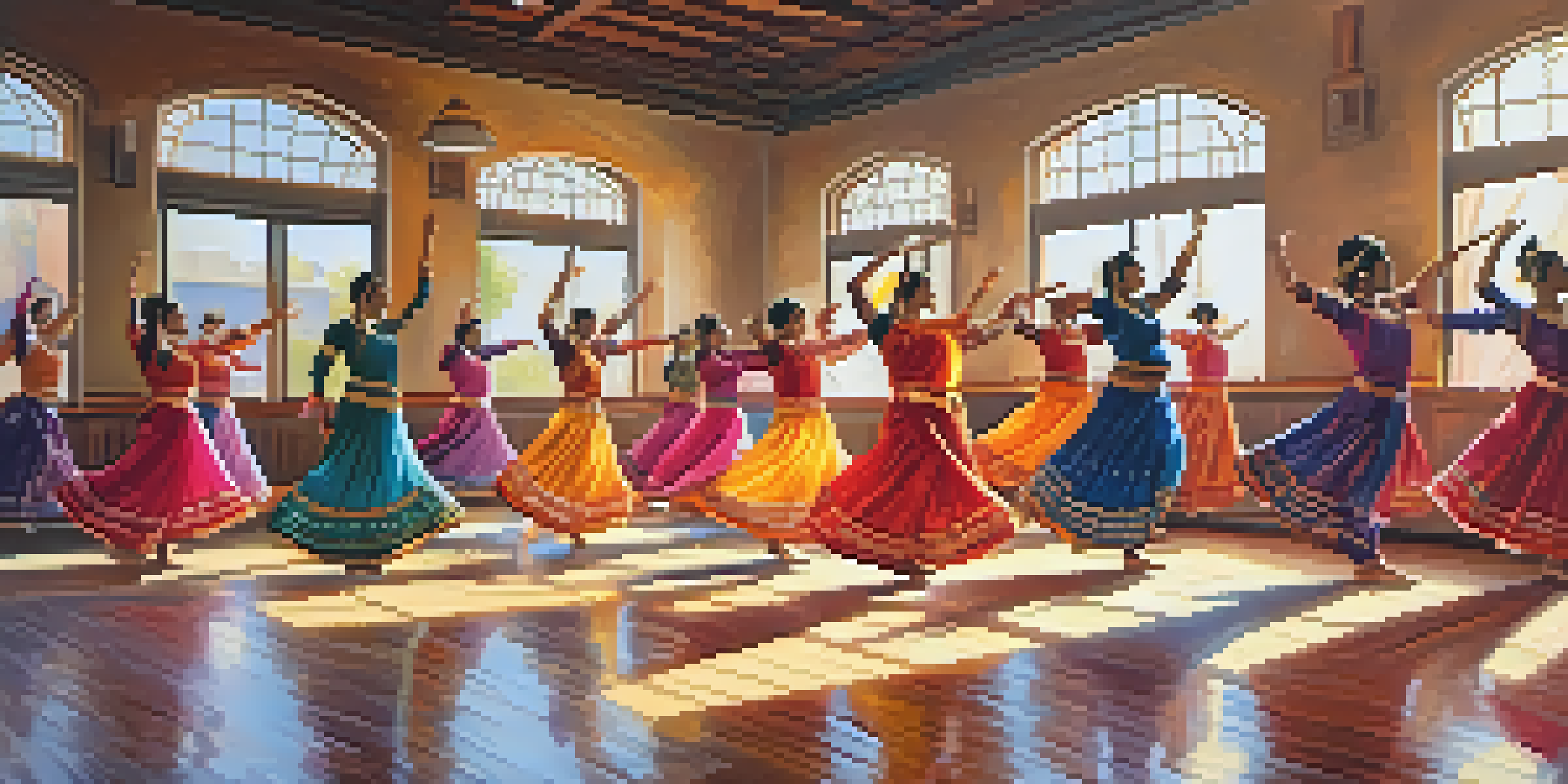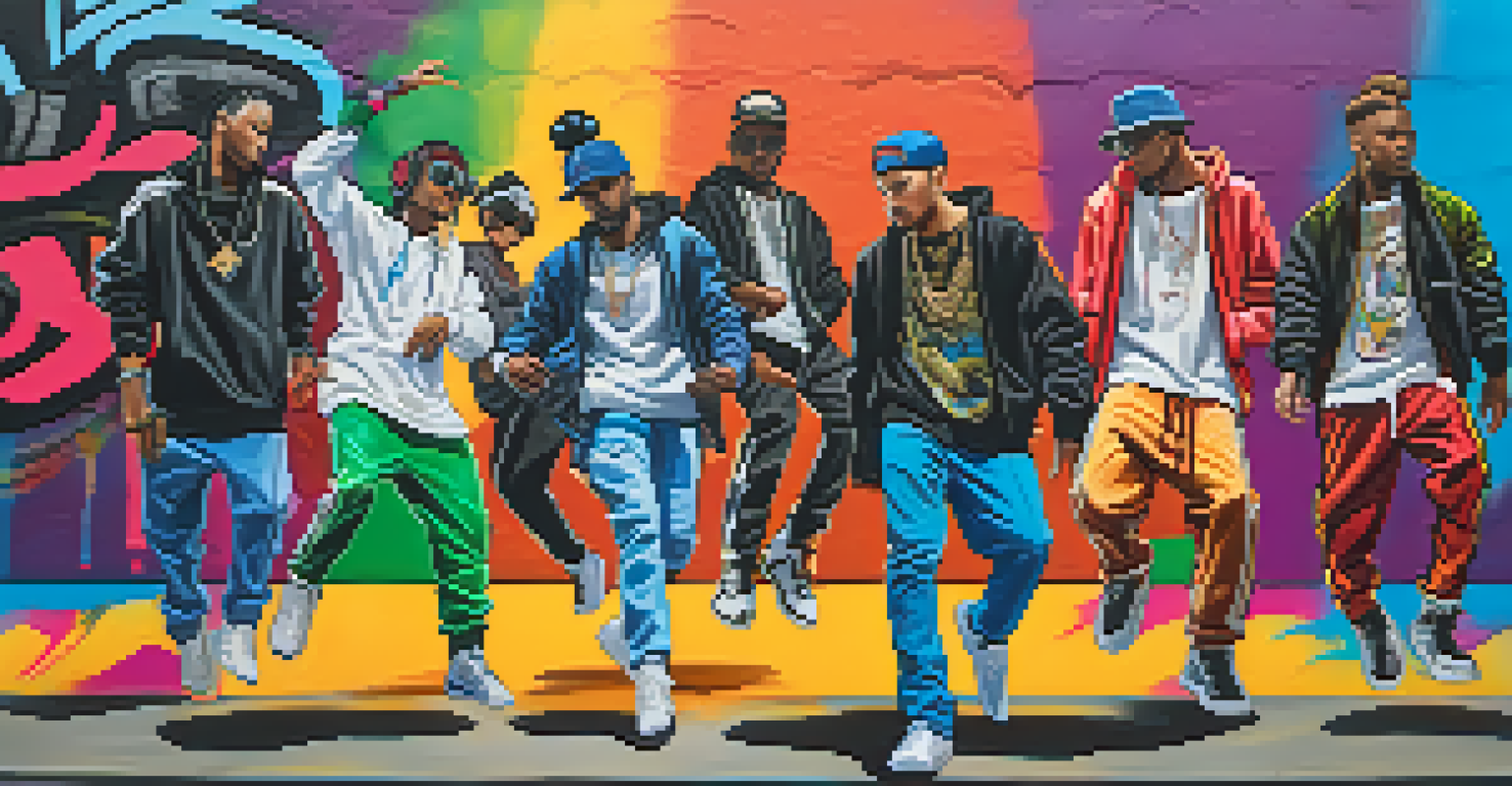Cultural Influences in Dance Fashion: A Global Perspective

The Roots of Dance Fashion: A Cultural Tapestry
Dance fashion is not just about clothing; it's a reflection of cultural heritage. Each dance style carries its own unique attire, shaped by the traditions and histories of the cultures from which they originate.
Dance is the hidden language of the soul.
For instance, the vibrant colors and intricate designs of traditional Indian dance costumes tell stories of the region's folklore and spirituality. Similarly, the sharp lines and sleek looks of ballet attire represent elegance and precision, rooted in European aesthetics.
By understanding these roots, we can appreciate how dance fashion serves as a visual narrative, connecting performers to their cultural histories and audiences to the richer contexts of the movements they witness.
Globalization and the Fusion of Dance Styles
In our interconnected world, dance styles are blending like never before, leading to exciting new fashion trends. Globalization has allowed dancers from different backgrounds to collaborate, creating a fusion that reflects multiple cultures.

Take, for example, the rise of hip-hop dance — it draws influence from street culture around the globe, resulting in eclectic fashion that combines elements from urban wear to traditional garments.
Cultural Roots Shape Dance Fashion
Dance fashion reflects cultural heritage, with each style showcasing unique attire that tells stories of its origins.
This fusion not only diversifies dance fashion but also promotes cultural exchange, inviting audiences to explore and appreciate various artistic expressions.
The Role of Iconic Dance Figures in Fashion Trends
Iconic dancers and choreographers often become trendsetters in the fashion world. Their unique styles can transform ordinary attire into fashion statements, influencing both the dance community and mainstream culture.
Fashion is the armor to survive the reality of everyday life.
Consider figures like Misty Copeland, whose ballet outfits have inspired designers and made classical dance more relatable. Her visibility in the fashion realm has challenged stereotypes and opened doors for new interpretations of dance attire.
As these influencers showcase their artistry, they also advocate for representation, pushing the boundaries of what dance fashion can embody.
Regional Styles: The Diversity of Dance Fashion
Different regions have their own distinctive dance styles that significantly influence their fashion. For instance, Flamenco dancers in Spain wear colorful dresses adorned with ruffles and polka dots, representing the vibrant spirit of their music and dance.
In contrast, the traditional attire of African dance often incorporates bold patterns and intricate beadwork, reflecting the rich cultural narratives of the continent. Each of these styles offers a glimpse into the social and historical contexts of their origins.
Globalization Blends Dance Styles
The fusion of diverse dance styles through globalization creates exciting new fashion trends that celebrate cultural exchange.
This regional diversity enriches the global dance fashion landscape, allowing performers to express their identities while paying homage to their cultural roots.
Dance Fashion and the Digital Age: A New Era
The digital age has revolutionized how dance fashion is perceived and shared. Social media platforms allow dancers to showcase their unique styles, reaching global audiences instantly.
This accessibility has led to the rise of online dance challenges, where participants often mix traditional dance attire with modern fashion trends, creating a dynamic blend that resonates with younger generations.
As trends evolve, so do the ways in which they are consumed, making dance fashion a living art form that continues to adapt to cultural shifts and technological advancements.
Sustainability in Dance Fashion: A Growing Concern
As awareness of environmental issues rises, sustainability has become a significant consideration in dance fashion. Dancers and designers are increasingly seeking eco-friendly materials and ethical production methods.
This shift not only helps preserve our planet but also encourages creative innovation, as artists are challenged to find sustainable solutions that still align with the expressive nature of dance.
Sustainability Drives Fashion Innovation
As sustainability becomes a priority, the dance community seeks eco-friendly materials and ethical practices in fashion design.
By prioritizing sustainability, the dance community can set a precedent for other industries, showing that fashion can be both beautiful and responsible.
The Future of Dance Fashion: Trends to Watch
Looking ahead, we can anticipate exciting trends in dance fashion that continue to embrace diversity and inclusivity. As global influences intertwine, we may see even more hybrid styles that celebrate multiculturalism.
Additionally, advancements in technology, like 3D printing and smart textiles, could pave the way for innovative designs that enhance performance while remaining stylish.

Ultimately, the future of dance fashion is poised to reflect the evolving dynamics of society, making it a fascinating area to watch for both dancers and fashion enthusiasts alike.